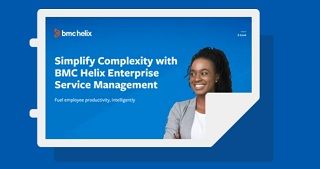“Customers will never love a company until the employees love it first.” – Simon Sinek, best-selling author, leadership guru, and professor at Columbia University
By now, it’s no secret that highly engaged employees make a dramatic impact on organizational success. Employee engagement is a buzzword for a reason: analysts and businesses alike have figured out that an engaged workforce translates to everything from a better customer experience to increased productivity to greater profitability. The question these days isn’t if to focus on employee engagement, but how.
The proven power of engaged employees
First, let’s look at the why of employee engagement. Why, specifically, must businesses prioritize their employees’ connection to their work and each other?
Highly engaged business units result in 21% greater profitability
A Gallup study found that “Engaged employees are more present and productive; they are more attuned to the needs of customers; and they are more observant of processes, standards and systems.” In particular, engaged teams demonstrated:
- 41% reduction in absenteeism
- 17% increase in productivity
- 59% less turnover in low-turnover organizations, 24% less turnover in high-turnover organizations
- 10% increase in customer ratings
- 20% increase in sales
All of these effects taken together significantly increased one of the most important metrics for any organization: a 21% boost to profitability.
Better performing companies have more engaged employees
Given the Gallup statistics, it’s no surprise that companies with more engaged employees perform better financially. The Temkin Group, now part of the Qualtrics XM Institute, uncovered that 82% of employees at companies with strong financial results are “highly” or “moderately” engaged, as opposed to only 68% at under-performing companies.
Disengaged employees cost U.S. companies up to $5.5 billion per year
On the flip side, employees who are NOT engaged cost their organizations in very quantifiable ways. A report by the Engagement Institute detailed what employees need to feel engaged—compelling missions, trusted relationships, well-designed jobs topped the list—and the financial implications of failing to deliver on those imperatives.
Employee engagement directly impacts the customer experience
Customer experience futurist Blake Morgan compiled a compelling list of statistics in an article for Forbes that clearly demonstrates the connection between the employee and customer experiences. They include:
- Companies that excel at customer experience have 1.5 times more engaged employees than companies with poor customer experience.
- 87% of customers’ affinity towards Starbucks is driven by the way the company treats its employees.
- 79% of employees at companies with above-average customer experience are highly engaged in their jobs, compared to 49% of employees at companies with average or below average customer experience scores.
- Business units with engagement and connection scores in the top 25% had 10% stronger customer metrics.
- Companies that invest in employee experience are four times more profitable than those who don’t.
These numbers are even more relevant when you consider another statistic from her article: 89% of companies expect to compete primarily on customer experience.
How to improve employee engagement
It’s clear that employee engagement is not a “nice to have”—it’s a serious competitive differentiator. Which brings us back to the how: what does it take to foster an engaged workforce?
The answer is multi-faceted, and includes must-haves like:
- Committed leadership
- Strong company culture
- HR support
- Many more
Some of these components are intangible, but some are also concrete, including business technology that enables and empowers your employees at work.
Today’s employees expect their workplace to deliver the same intuitive platforms, interfaces, and interactions they experience in their everyday lives. As more digital natives enter the workforce and the digital IQ of older employees goes up, the gap between business and consumer technology gets smaller. To work efficiently, effectively, and in an engaged manner, people need solutions that feel like the apps they use at home—a seamless, unique experience that just works.
BMC Helix Experience for more engaged employees
Delivering that consumer-style experience requires that business technology should be:
- Intelligent
- Conversational
- Personalized
We used these characteristics as driving principles behind BMC Helix Experience. Comprised of BMC Helix Digital Workplace and BMC Helix Chatbot, BMC Helix Experience makes it easy for employees to get consumer-grade experiences with flexible, personalized access to services that shields them from complex backend systems.
BMC Helix Experience is:
- Intelligent. BMC Helix Experience offers proactive suggestions that guide users through request and work streams, so they can make and act upon decisions quickly. It automates routine tasks so IT can proactively resolve events and employee issues. And it makes it easy to embed cognitive capabilities into service delivery across the enterprise.
- Conversational. AI and Machine Learning power immersive and conversational chatbot experiences. Using Natural Language Processing, BMC Helix understands intent, context, and even tone to help employees get to the right knowledge, services, or apps exactly when they need it.
- Personalized. BMC Helix Chatbot also creates a personalized end-user experience, fetching relevant info, predicting employee needs, and seamlessly transferring to other LoB bots (HR, Facilities, Finance, and others). Additionally, users can choose to engage through their channel of choice, including web, SMS, Skype, Slack and more.
When employee engagement is paramount, look to BMC Helix Experience for a technology partner that exceeds the expectations of the modern workforce.







